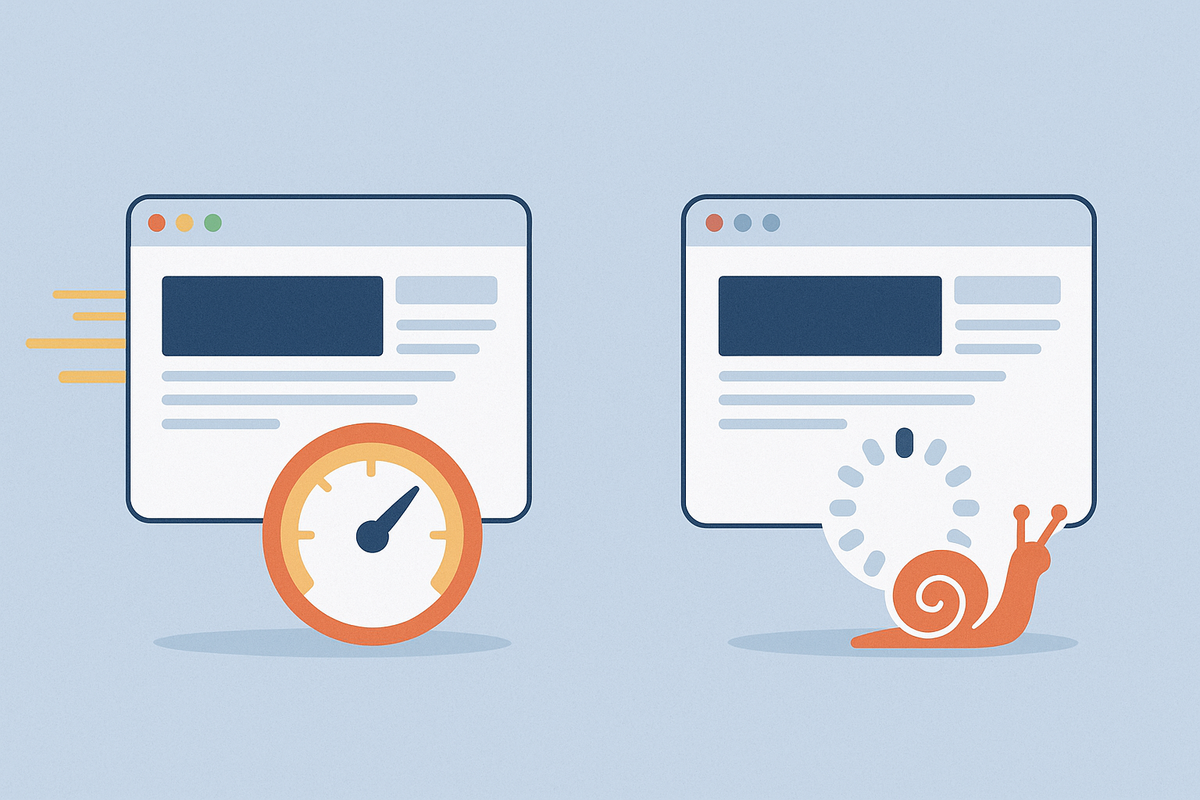The Importance of Website Speed and How to Improve It

We’ve all been there: you click on a link, wait a few seconds for the page to load, and then… nothing. Maybe an image finally appears, maybe not. After about three or four seconds, you close the tab and move on with your life.
That’s the reality of the internet today — people are impatient. And it’s not just impatience for impatience’s sake; it’s that there are a million other sites out there competing for attention. If yours is slow, it’s easier to just click away.
This is why website speed matters so much. It’s not just a technical detail; it’s the difference between someone staying to read your content or leaving before the first headline appears.
Why Speed Matters More Than Ever
The numbers tell the story: studies show that if a website takes longer than three seconds to load, more than half of visitors will leave. Three seconds! That’s less time than it takes to unlock your phone.
Speed affects everything:
- User experience: Fast websites feel professional and trustworthy. Slow ones feel broken, even if they aren’t.
- Conversions: If you’re selling something, every extra second of loading time costs you sales.
- Search engine rankings: Google takes speed into account when deciding where to place your site in search results.
In short, speed is no longer a “nice to have.” It’s a necessity.
Common Culprits of a Slow Website
So what actually slows down a site? A few usual suspects show up again and again:
- Cheap or overloaded hosting – If you’re on a shared server with too many other sites, your site can crawl even with minimal traffic.
- Too many plugins – Especially with WordPress, plugins are powerful but can also bog down performance.
- Unoptimized images – Uploading giant photos straight from your camera can balloon your page size.
- Too much code or scripts – Fancy themes or third-party scripts (like ads or trackers) can drag things down.
- Lack of caching – Every time someone visits your site, the server has to build the page from scratch unless caching is enabled.
The good news? All of these have solutions.
How to Improve Your Website Speed
Improving speed isn’t about mastering rocket science; it’s about making small, smart choices that add up.
- Choose better hosting: If your site is slow and you’re on the cheapest shared plan available, upgrading to a better host or a VPS can make a huge difference overnight.
- Compress and resize images: Tools like TinyPNG or plugins like Smush automatically shrink images without losing quality.
- Use caching: Caching plugins (like WP Super Cache or W3 Total Cache) store ready-made versions of your pages so they load instantly.
- Minimize plugins: Stick to the essentials. Each plugin adds weight, and too many can slow you down.
- Enable a CDN: A Content Delivery Network like Cloudflare serves your site from multiple locations worldwide, reducing the distance between you and your visitors.
Even implementing just one or two of these can shave precious seconds off your load time.
The Human Side of Speed
It’s easy to get lost in technical talk, but website speed is really about something simple: respecting your visitors’ time.
When someone clicks on your site, they’re giving you a chance. A fast site rewards that trust by letting them in immediately. A slow site wastes that chance before they’ve even seen your work.
Think of it like a shop. If the door is locked and people have to wait outside, some will give up and walk away. A fast-loading site is like a shop with an open door, welcoming people inside without delay.
Website speed isn’t just for developers to worry about — it’s something every site owner should care about. It affects how people see you, how long they stay, and even whether they find you on Google.
The best part? Speed isn’t out of reach. By choosing reliable hosting, optimizing your images, using caching, and trimming unnecessary extras, you can transform your site from sluggish to snappy.
So if you’ve been ignoring your site’s speed, take this as your sign. Run a test (Google PageSpeed Insights is free), see where you stand, and start improving. Your visitors — and your future self — will thank you.